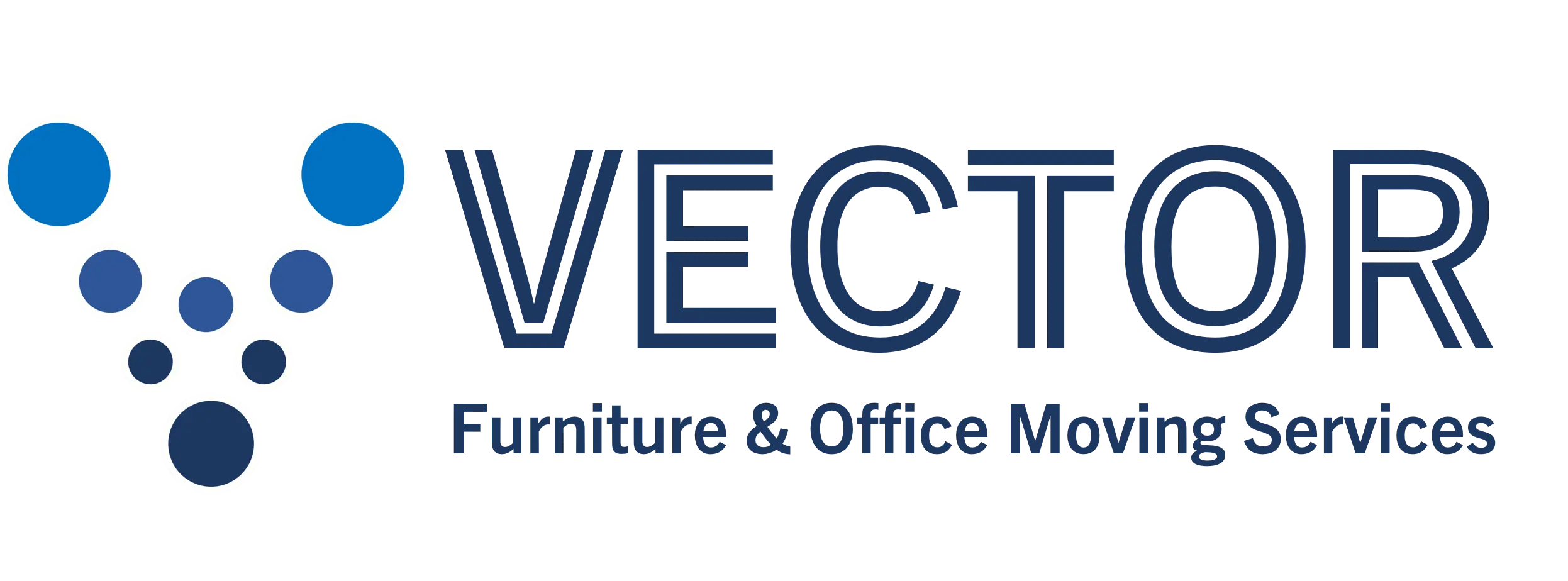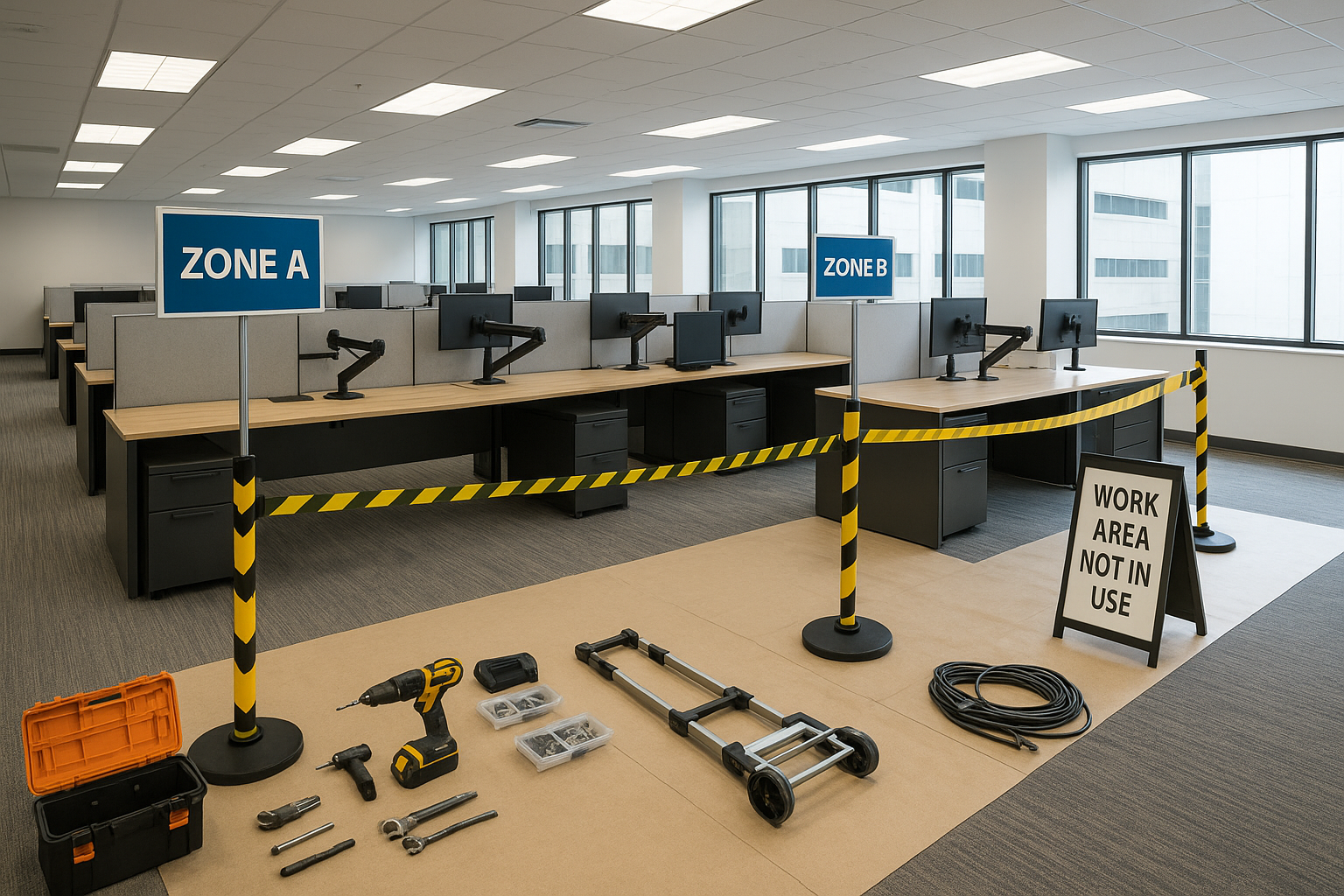Live Office Installations How to Reconfigure Without Shutting Down
Keeping business running while crews reconfigure workspaces is possible with the right plan. This guide shows how Vector Installation Services delivers changes in occupied offices with minimal disruption. Use it when you need to add seats, shift departments, or roll out sit stand across the floor without closing for a day.
What a live installation involves
A live installation is any reconfiguration that happens during normal operations. The space stays open. Staff remain at their desks. Work continues while crews move zone by zone. Success depends on precise staging, quiet methods, and clear communication so teams know what to expect each hour.
Goals for zero downtime
-
Maintain safe and open egress at all times
-
Keep noise below agreed thresholds for focus zones
-
Protect IT and power continuity for critical teams
-
Deliver each zone fully complete before moving on
-
Leave the site clean and desk ready at the end of every shift
Zoning and sequencing
We split the floor into small work zones that complete in one shift. Zones are color coded on a map that everyone can read. Each zone has a start time, an end time, and a crew lead. Adjacent zones are never active at the same time. This limits noise, dust, and foot traffic in occupied aisles.
Communication plan that prevents surprises
Employees receive a two page brief with a floor map, daily schedule, and what to do with personal items. Department heads get a calendar invite for their zone window. Facilities receives a daily summary with photos and production counts. The help desk receives a list of stations changing power or data so tickets are ready if needed.
Night and weekend micro moves
Critical areas like finance, trading, or support can shift after hours. We complete micro moves between close and open, then run a quick morning check before staff arrive. If the building restricts weekend work, we use split shifts and quiet methods during business hours.
Quiet methods that work in occupied spaces
We use hand tools where possible and vacuum attachment drills when anchors are required. Cutting and loud fabrication are done offsite. Floor protection and corner guards go down before any carts or pedestals move. Crews work with soft wheel equipment and padded dollies to keep sound low and finishes clean.
Staging for speed
Hardware kits are prebuilt for each station. Power harnesses, brackets, and cable trays are bagged by desk number. Pallets are labeled by zone and sequence so installers do not search for parts. This turns the zone into a predictable build with fewer trips to storage.
IT continuity and cable management
Power and data changes are planned with your IT team a week ahead. We keep one live drop per cluster during the cutover. Docking stations and monitor arms are set to ergonomic height. Cable paths are tied and hidden so staff return to a clean desk with working power, network, and displays.
Safety in an occupied environment
Work areas are cordoned with clear signage and bright stanchions. Aisles stay open to code width at all times. Cords are covered with low profile ramps. Debris is bagged as it is created and removed at the end of every shift. A site lead walks the floor hourly to verify compliance.
Day end reset standard
Every shift ends with vacuum, wipe down, and a desk ready check. Drawers open and close smoothly. Panels align. Chairs and monitors are positioned neatly. Any open items go on a punch list with a target date. The area returns to a professional workspace before staff return.
Metrics that show progress
We track stations completed per hour, punch items open and closed, and noise observations by zone. The daily summary includes photos and a short note on risk items for the next day. These numbers help facilities confirm schedule and keep stakeholders informed.
Common pitfalls and how to avoid them
For safety, durability, and testing guidance on commercial office furniture, reference the BIFMA Safety and Performance Standards and align your specifications to the applicable level.
No staging leads to slow builds. Prebag hardware by station.
Poor communication frustrates staff. Send the two page brief and a calendar invite.
Overlapping trades cause delays. Lock a single schedule with clear zone ownership.
Open punch items linger. Close each zone before moving on.
When to use live installs versus a full shutdown
Use a live install when changes are light to medium and the floor can be divided into zones. Choose a full shutdown when you are replacing most furniture, relocating power for many stations, or reworking conference rooms with heavy wall anchoring. We can help you run a blended plan that keeps core teams online while larger work happens off hours.
Why Vector Installation Services
You get a disciplined crew trained for occupied environments. We protect finishes, respect building rules, and communicate clearly with your team. The result is a tidy floor each morning and a project that lands on time without interrupting operations.
Ready to Simplify Your Office Services?
Contact Vector Installation Services today for a free consultation!
Visit us at Vector Installation Services for helpful resources and to learn more about our services.

